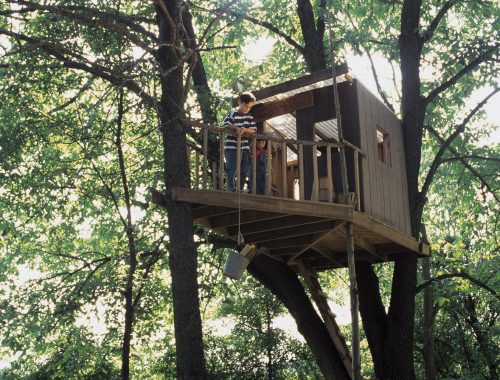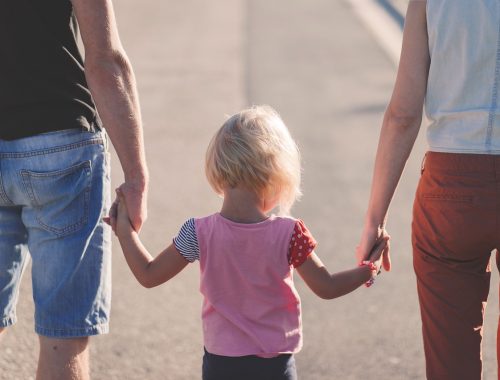
Childhood Fever (Part 1)
Every child has a fever now and again. A fever is ordinarily harmless and might even be beneficial because it indicates that the body is combating an illness.
But it’s easy to be stumped when your child wakes up flushed, feverish, and sweating in the middle of the night. Is it necessary to bring out the thermometer? Should I consult a physician?
More about fevers, including when to call your doctor, may be found here.

What Is a Fever?
The thermostat is located in the hypothalamus, a component of the brain. The hypothalamus understands what temperature your body should be (typically about 98.6°F/37°C) and sends signals to the rest of your body. When the body’s internal “thermostat” increases the body temperature over its usual level, it is called a fever.
Most people’s body temperatures fluctuate throughout the day: they’re somewhat lower in the morning and slightly higher in the evening, and they can shift when children move around, play, and exercise.
The hypothalamus may “reset” the body temperature to a higher level in reaction to an infection, disease, or other reason. Why? Researchers believe that increasing the temperature helps the body fight infection-causing bacteria by making it a less suitable environment.
Fevers: What Causes Them?
It’s crucial to remember that a fever isn’t a sickness in and of itself; it’s generally an indication or symptom of something else.
Fevers can be brought on by a variety of factors, including:
An infection or another sickness usually causes fever. The body’s inherent defensive systems are stimulated by a fever, which aids in the battle against infection.
Overdressing: Because infants, especially newborns, do not control their body temperature as effectively as older children, they may develop fevers if over bundled or in a hot environment. Fevers in newborns can signify a dangerous illness; thus, even overdressed, a doctor should evaluate infants if they have one.
Immunizations: Immunizations can cause a low-grade fever in babies and children.
Teething may produce a minor increase in body temperature, but if a child’s fever is more significant than 100°F (37.8°C), teething is unlikely to be the reason.
When A Fever Can Be Considered as Serious?
Not all fevers in healthy children need to be treated. However, a high temperature can make a youngster uneasy and exacerbate conditions (such as dehydration).
Doctors examine the temperature and the child’s general health when deciding whether or not to treat a fever.
Children with temperatures below 102°F (38.9°C) rarely require medication unless uncomfortable. There is one important exception: if a newborn under the age of three months develops a rectal temperature of 100.4°F (38°C) or higher, call your doctor or go to the emergency room right once. In extremely young newborns, even a modest fever can indicate a potentially dangerous illness.
A child between 3 months and 3 years old with a temperature of 39°C or higher should see a doctor. For older kids, take behavior and activity level into account. Observing your child’s behavior will give you a decent sense of whether a minor illness is to blame or whether they need to see a doctor.
If your child has the following symptoms, the sickness is unlikely to be serious;
- Interested in participating in games
- Well-nourished and hydrated
- Alert and looking at you with a smile
- A normal complexion
- When their temperature drops, they appear to be in good shape.
Not eating as much as usual is fine for kids who still drink and urinate (pee) usually. Also, don’t be concerned if your child has a fever and refuses to eat. This is especially prevalent with fever-producing diseases.

Is it a Fever or a Cold?
A simple kiss on the forehead or a hand lightly put on the skin is frequently enough to indicate that your child suffers from a fever. However, this method of obtaining a temperature (known as tactile temperature) will not provide an accurate reading.
To confirm a fever, use a reputable digital thermometer. When a child’s temperature is at or above one of these values, it’s called a fever:
100°F (37.8°C) measured orally (in the mouth)
100.4°F (38°C) measured rectally (at the bottom)
99°F (37.2°C) recorded in an axillary position (under the arm)
However, the severity of a fever does not necessarily indicate how sick your child is. A high temperature (in the 102°–104°F/38.9°–40°C range) can sometimes be caused by a simple cold or other viral infection, although this does not always indicate a significant condition. A dangerous disease might generate no fever or a low temperature (under 97°F or 36.1°C), especially in newborns.
Because fevers can climb and fall, kids may experience chills when their body temperature rises. As the temperature decreases, the youngster may start to sweat to release more heat. If you want to know more about childhood fever, let us know in the comments.
You May Also Like

How To Build A Treehouse For Your Kids?
2021-12-15
First-Time Babysitting: Everything You Should Know
2021-10-20

